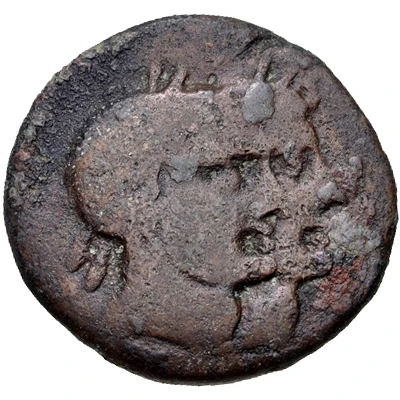


© Classical Numismatic Group, Inc.
Æ Trishekel 175 BC - 150 BC
| Bronze | 14.00 g | 29 mm |
| Issuer | Utica (Zeugitana) |
|---|---|
| Type | Standard circulation coin |
| Years | 175 BC - 150 BC |
| Value | Trishekel (3) |
| Currency | Shekel |
| Composition | Bronze |
| Weight | 14.00 g |
| Diameter | 29 mm |
| Shape | Round (irregular) |
| Technique | Hammered |
| Demonetized | Yes |
| Updated | 2024-10-09 |
| Numista | N#196722 |
|---|---|
| Rarity index | 93% |
Reverse
Two horses advancing right.
Interesting fact
The Æ Trishekel coin from Utica (Zeugitana) was used as a form of currency during the Roman Republic, and its design features a unique combination of symbols and letters that reflect the cultural and political influences of the time. The obverse side of the coin depicts a stylized image of the Roman goddess Venus, while the reverse side features the image of a dolphin, which was a symbol of good luck and prosperity in ancient Greek and Roman cultures. The coin's design also includes the letters "UTI" (an abbreviation for Utica) and "ROMA" (a reference to the Roman Republic), which highlights the coin's origins and the political entity that issued it. Overall, the Æ Trishekel coin from Utica (Zeugitana) is an interesting example of how currency can serve as a reflection of a society's values, beliefs, and political structures.